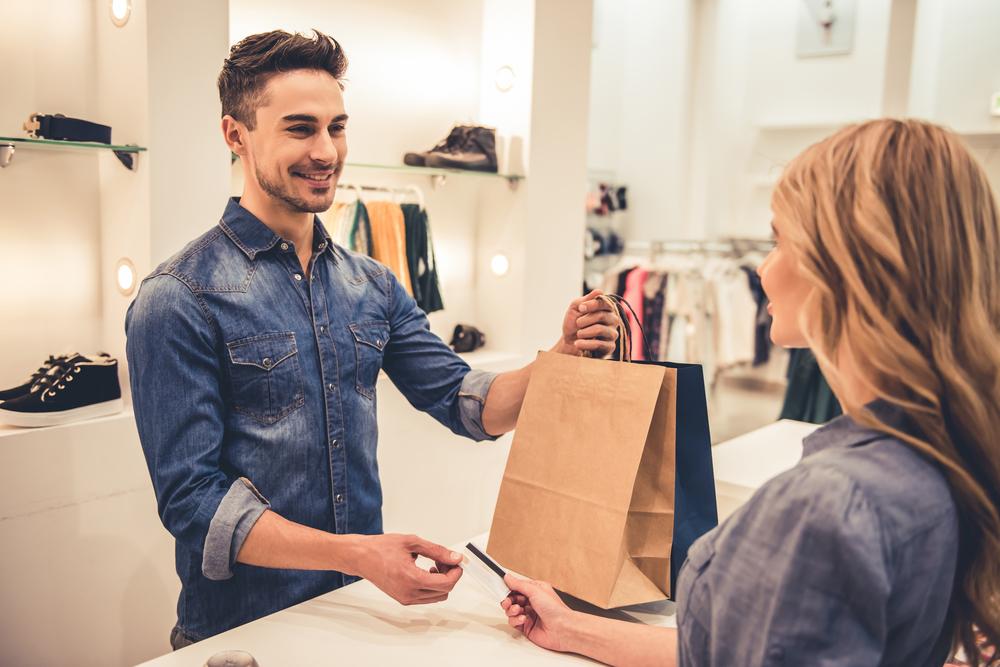
Retail Store Safety Tips for Employees
Retail store workers are responsible for creating a welcoming environment for shoppers, which means stores with dry floors, well-stocked shelves, and clear paths. These are not unusual expectations.
However, for retail store workers, this means a job description that includes everything from moving heavy boxes to organizing shelves, scanning items and bagging purchases, and common injuries that workers experience are musculoskeletal disorders, slips and falls, and overexertion. According to the Bureau of Labor Statistics, injury within the retail store industry was higher than the construction industry in 2016. To change the landscape of this, stores need to commit to prioritizing safety over inventory.
Retail Store Safety Tips for Employees
A few simple ways that stores can prioritize safety is by including regular safety training, safety auditing, orientation, routine inspections, and refresher training. When employees are using equipment or their own bodies for lifting products, it’s crucial that processes are efficient and lifting techniques are ergonomic. Retail stores should also consider their processes and look for ways to reduce injuries by streamlining how things are done.
Repetitive Motion
One common cause of injury is repetitive motion. Retail store cashiers are a prime candidate for repetitive motion injuries since they spend hours scanning and moving items from the conveyor belt to a bag. Data estimations show that cashiers lift approximately 2,000 pounds per 8-hour shift. A few ways that stores have minimized injuries is to use lazy Susans for bagging groceries, soft edges on counters, and training on posture.
Slips, Trips, and Falls
To prevent slips, trips, and falls, the retail industry needs to prevent possible hazards such as wet floors, objects in the walkway, uneven surfaces, and other types of situations. Some of the ways that injuries can be avoided are through identifying possible hazards, choosing anti-slip floors, providing slip-resistant footwear policies, requiring specific floor-cleaning procedures, and reporting incidents. It’s also important for good lighting to be available.
Fire Hazards
Keeping a retail store space safe includes avoiding certain fire hazards. Managers and employees alike should watch for fire hazards such as improper chemical storage, combustible materials, or exposed wire. Be sure that fire extinguishers are placed throughout the store and that every employee knows how to use them.
Air Quality
Proper ventilation within a store is not always possible due to its location within a mall or without windows. When proper ventilation is not occurring, the retail store may begin to circulate bacteria, mold, and other bad vapors. Poor air quality can have long term and negative consequences on employees and shoppers. Improve air quality by cycling fresh air with a mechanical air system.
Routine Inspections
Sometimes a visual inspection can be the difference between an injury and no injury. With a quick visual sweep of the store, you may be able to notice possible spills, floor obstructions, misplaced boxes, or some other item that might cause a trip and fall. Every person in your retail team can be trained to look for these issues and respond to them quickly to prevent injuries of employees or shoppers.
Crime
Shoplifting can endanger the safety of customers and employees. If someone believes they can get away with stealing in your store, they could also be willing to hurt people while doing so. A few ways that stores can protect employees and shoppers is by installing security systems and surveillance cameras. Cashiers should be trained in the correct protocol if someone tries to steal, and it might be beneficial to hire a security guard.
Good Lighting
While low lighting might fit your store’s vibe, it can be a safety risk. Poor lighting can mask stealing or make it easier for people to trip over objects on the floor. Good lighting is a must to prevent falls and prioritize safety for everyone.
Employee Training
The main way to ensure safety in your store is to be sure that all employees are trained in how to handle different emergencies and situations in the store. One way to help prevent accidents is to have employees trained in First Aid and CPR. When employees are trained in how to handle problems, safety is increased for workers and shoppers alike.
Quick Tips for Retail Store Safety
- Think ahead about potential hazards specific to your industry and prepare
- Never block fire extinguishers or sprinklers
- Keep emergency exits clear at all times
- Always use signs to denote wet floors or other hazards
- Train employees on ladder use
- Practice good lifting techniques
When safety in a retail store is prioritized for workers, the store becomes a safer place for shoppers as well. By creating a culture that values safety, accidents will become less frequent, which means less work missed and a happier community. Take the right steps to ensure safety, and if your safety is at risk, consider what legal options may be available to you by contacting a lawyer today at office@carrilloinjurylaw.com.
https://www.safetyandhealthmagazine.com/articles/16667-safety-hazards-retail-workers
https://smallbusiness.chron.com/safety-retail-stores-39926.html
- Log in to post comments